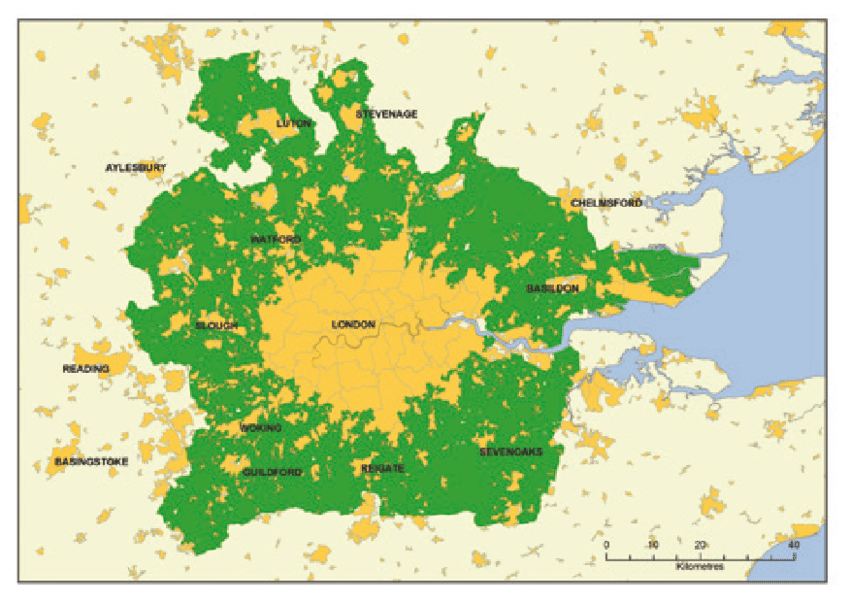The green belt map plays an essential role in shaping the way towns and cities grow across the United Kingdom. These maps show boundaries of protected land, often surrounding urban areas, which are legally safeguarded from development. The policy was introduced to stop uncontrolled sprawl and ensure communities have access to countryside, farmland and open green space. For many people, the green belt map provides clarity on what is possible when buying or developing land.
Beyond planning purposes, the green belt map symbolises the UK’s commitment to environmental sustainability and balanced development. With growing pressure for new housing, the maps serve as a reminder of the need to protect landscapes, biodiversity and heritage. At the same time, they help prevent cities from merging into one another, maintaining distinct towns and preserving natural habitats. Without the green belt map, many rural areas near major cities would likely have been lost to rapid expansion.
Understanding the UK green belt map system
The UK green belt map is a nationwide tool, but each region interprets it slightly differently. In England, large belts of land protect areas around London, Birmingham, Manchester and other cities. The England green belt map highlights how widespread the designation is, covering millions of acres of countryside. Meanwhile, the Scotland central belt map operates differently, but the purpose remains the same: ensuring development is concentrated in the most sustainable locations.
One of the key debates surrounding the UK green belt map is how it interacts with other planning classifications. The term grey belt, for example, refers to areas of land that have previously been developed and may be suitable for redevelopment. In contrast, the green belt map highlights land that should remain free from large-scale building. This balance between grey and green designations helps local authorities plan effectively while still meeting the demand for housing.
Interactive green belt map and how to use it
In the digital age, the interactive green belt map has become an invaluable tool for planners, property buyers and the general public. Rather than relying on paper maps or complicated planning documents, users can now enter a postcode and instantly see if the land falls within the green belt. This quick access saves time and makes the planning process more transparent. It also empowers individuals to take part in community consultations with greater confidence.
The benefit of the interactive green belt map lies in its detailed layers. For instance, someone in Yorkshire might consult the York green belt map to see how local land is restricted, while others may check the Sheffield green belt map for building opportunities. Similar resources exist for Oxford, Cambridge and other university cities, where the demand for housing often collides with preservation. By providing clear, up-to-date information, the interactive map reduces conflict between residents, councils and developers.
The London metropolitan green belt map

The London green belt map is perhaps the most famous example of this planning tool. Established in the mid-twentieth century, the metropolitan green belt map was created to prevent London from expanding endlessly into neighbouring counties. Today it protects vast swathes of countryside, ensuring farmland, woodland and recreational space remain available to communities on the edge of the capital. Without this policy, Greater London might have stretched continuously into surrounding towns.
The London commuter belt map is often mentioned alongside the green belt because it shows towns within easy travelling distance of the city. These areas are under constant development pressure due to demand for housing, yet the London green belt map restricts expansion into designated land. This tension between conservation and growth is one of the biggest challenges faced by urban planners. Still, the metropolitan green belt remains a cornerstone of UK planning policy, balancing the need for homes with environmental responsibility.
Global comparisons with the green belt map
While the green belt map is uniquely British, similar mapping concepts exist across the world, highlighting how boundaries shape society and planning. For example, the rust belt map in the United States describes regions once dominated by heavy industry, now facing economic challenges. Similarly, the bible belt map identifies cultural and religious strongholds in America, showing how geographical boundaries can reflect social identity rather than environmental policy.
Other global examples focus on natural or agricultural zones. The coffee belt map illustrates regions near the equator where coffee grows best, spanning countries in Africa, South America and Asia. Meanwhile, the Caribbean hurricane belt map shows storm-prone areas frequently impacted by hurricanes, reminding us of the environmental risks tied to geography. Though very different from the UK green belt map, these examples demonstrate the importance of mapping boundaries to understand land use, natural patterns and human behaviour.
The future of the green belt map
Looking towards 2025 and beyond, the green belt map remains a subject of national debate. Housing demand continues to rise, with politicians and developers calling for parts of the belt to be reviewed or released. At the same time, environmental groups stress the importance of keeping the boundaries intact to protect biodiversity, food security and climate resilience. The green belt map therefore sits at the heart of one of the UK’s most pressing policy challenges.
The future may involve greater reliance on interactive platforms, making the green belt map more accessible to everyone. Advanced tools could help visualise how potential changes affect communities, wildlife and infrastructure. In addition, policies may evolve to integrate both the green belt and grey belt more strategically, ensuring that brownfield land is used before considering greenfield sites. Whatever the outcome, the green belt map will remain a crucial guide for sustainable development in the UK.
Conclusion
The green belt map UK is not just a set of lines on a document; it is a living framework for how the nation grows while safeguarding its countryside. From the London green belt map to the Scotland central belt map, these boundaries protect landscapes, provide recreational spaces and help shape modern communities. The maps also give clarity to homeowners and developers, ensuring that decisions are made with transparency and foresight.
Global comparisons, such as the hurricane belt map or coffee belt map, reveal that while the UK’s system is unique, the idea of defining boundaries is universal. As 2025 progresses, the green belt map remains a vital part of planning policy, balancing the urgent need for housing with the long-term commitment to environmental preservation. By embracing interactive tools and public engagement, the UK can continue to use its green belt map as a foundation for sustainable living.
You may also read: Cost of Building a House UK: 2025 Prices, Costs per Square Metre & Complete Guide






